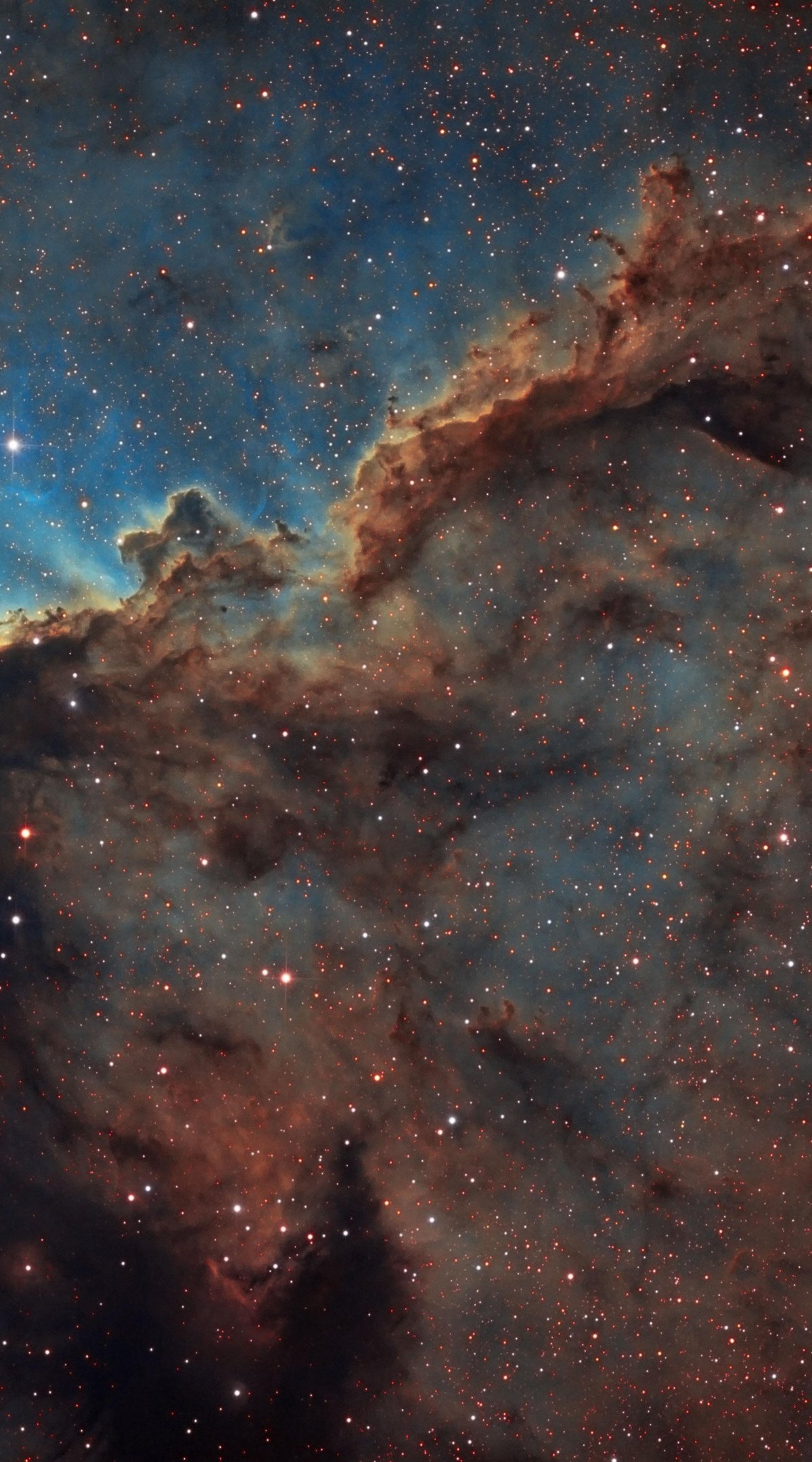On a weekly basis, TecMundo and #AstroMiniBR curate a special selection of the most relevant astronomical curiosities, produced by profile contributors at X to share with you a little about our fascinating universe. Check it out below!
#1: Dragons in the deep sky!
Nebula NGC 6188, Also known as the Dragon Nebula, it is a star-forming region located in the constellation Ara.It is approximately 4000 light-years away from Earth. This nebula is characterized by dark, swirling structures that resemble the shape of a dragon, hence its popular name.
The nebula, composed predominantly of ionized hydrogen, shines brightly due to ultraviolet radiation emitted by nearby young, massive stars. These young, hot stars are responsible for the ionization of gas, creating a characteristic glow that allows astronomers to study star formation processes in detail.
The Dragon Nebula is impressively large, measuring approximately 100 light-years in length. Its origin is linked to intense episodes of star formation occurring in the region, fueled by shock waves and stellar winds from massive stars.
These forces compress interstellar gas, making it dense and cold, triggering the birth of new stars. NGC 6188 hosts many star clusters and protostars, as well as young stars. Providing a natural laboratory for studying the earliest stages of stellar life.
#2: What is the sun made of?
The Sun, the central star of our solar system, is an extremely hot sphere of plasma and is in a constant state of nuclear fusion. Its chemical composition is dominated by hydrogen, which accounts for approximately 74% of its mass.
The second most abundant element is helium, representing approximately 24%. These two elements, hydrogen and helium, It is crucial to the nuclear fusion processes that occur in the core of the Sun, where hydrogen is converted into helium.It releases enormous amounts of energy, radiating light and heat throughout the solar system.
In addition to hydrogen and helium, the Sun also contains trace amounts of heavier elements, albeit in much smaller amounts. These include oxygen (about 0.8%), carbon (about 0.3%), neon (about 0.2%), and iron (about 0.2%). Although these elements are present in small amounts, they play an important role in solar dynamics and the formation of structures such as sunspots and protrusions.
The chemical composition of the Sun not only reveals the internal processes of this star, but also provides valuable clues about the formation and evolution of the solar system as a whole.
#3: How long is a day on Jupiter?
The rotation of planets in the Solar System is a fascinating phenomenon that reveals the dynamic diversity of celestial bodies. Each planet has a different rotation period, which is affected by factors such as its formation and composition.
While Earth takes approximately 24 hours to complete one rotation, which determines the length of a day, other planets vary significantly in this time. For example, Mercury has an extremely slow rotation and completes one rotation around its axis in approximately 59 Earth days.
Jupiter, the largest planet in the Solar System, is surprising in that it has the fastest rotation. Jupiter completes one rotation in approximately 10 hours, resulting in the shortest day of any planet in our system.. This accelerated rotation is especially impressive considering Jupiter’s enormous diameter, which is 11 times larger than Earth’s.
Jupiter’s rapid rotation contributes to its unique atmospheric features, such as the formation of cloud bands and intense storms, including the famous Great Red Spot, a storm larger than Earth that has persisted for centuries.
Did you like the content? Therefore, always stay up to date with the latest astronomical curiosities at TecMundo. To the next one!
Source: Tec Mundo
I’m Blaine Morgan, an experienced journalist and writer with over 8 years of experience in the tech industry. My expertise lies in writing about technology news and trends, covering everything from cutting-edge gadgets to emerging software developments. I’ve written for several leading publications including Gadget Onus where I am an author.













